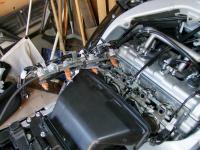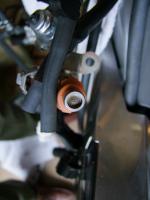Klubis
Well-known member
I'm asking the same questions as James K. I'm off to Google now.

To pull the injectors, it seems like all I have to do is remove the screws that attach the injector rail and unplug the electrical connectors, right? The injectors themselves kind of "smoosh" fit into the intake tubes as I recall? Then I just throw them in the Maytag on "regular"? Not. Where does one get ones injectors cleanified?It is more likely that ethanol loosened up splooge, and it won't dissolve it, that is, if any splooge was loosened at all. The naptha in Seafoam gently dissolves gums and splooge over time, but it's sounding like time to pull the injectors and have them cleaned. It's not that difficult if you're so inclined.
Another thought, check the plug wires at the coils to ensure they are connected tight, and at the plugs themselves.
Hear, hear! No matter what elixir you add to the fuel, once it has phase separated it's now low octane crap fuel and cannot be made "right" with an additive. Drain it and start fresh.No matter what you put in the tank (to absorb water), I would siphon out the original fuel and start with fresh (and run that 'puppy' on the hwy). If it won't run highway speeds then perhaps your troubleshooting will need to go deeper. Gut feeling is fuel (though we still are only guessing without seeing the bike and knowing the storing conditions, etc.).
It's not hard. I took my fuel rail off to install my cruise control, took out an injector "just because"....
To pull the injectors, it seems like all I have to do is remove the screws that attach the injector rail and unplug the electrical connectors, right? The injectors themselves kind of "smoosh" fit into the intake tubes as I recall? Then I just throw them in the Maytag on "regular"? Not. Where does one get ones injectors cleanified?











Yep. Do this first, Easy and cheap. If anything, you'll have eliminated fuel as the problem. Just running a 100 miles and filling with fresh fuel is only diluting the crummy fuel by 50%; do it again, and you've still got 25% crap.Think you used too much Seafoam, regular dose is 1 tablespoon per gallon, it's not a fuel, it's a alcohol based lubricant with some added solvents. Drain the fuel and start over. No seaform this time.
Correct - it won't solve the current problem, but it could prevent similar problems in the future.I'm skeptical running "pure" gas will solve anything, unless you can be sure you will never run an ethanol blend in the future. Any "ethanol goop" is likely varnish, originally built up from running pure gas, but now dissolved in the fuel by the ethanol and being fed through the fuel injection/engine.